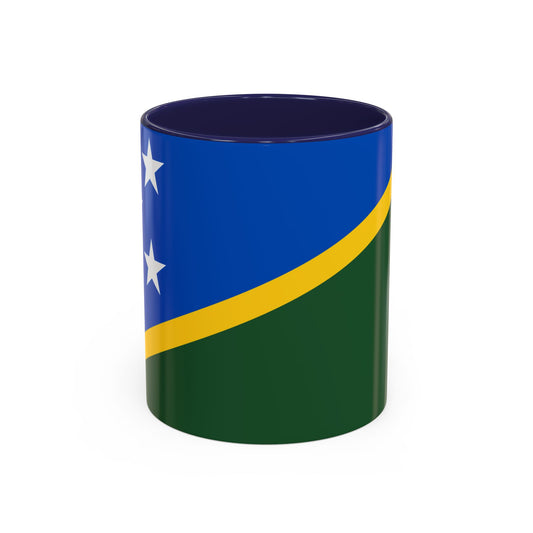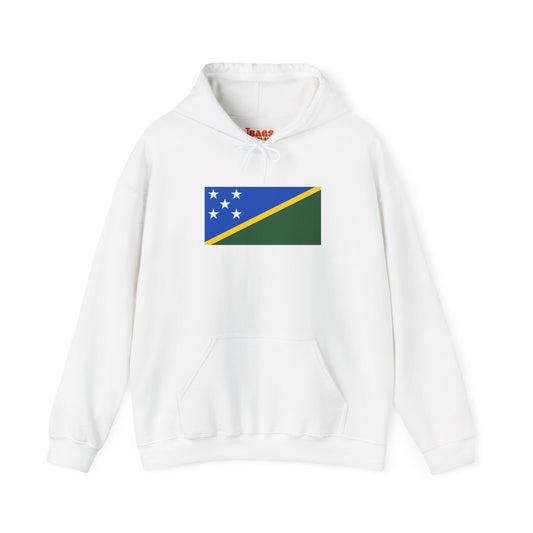-
Solomon Islands Flag Sweatshirt
Regular price $34.15 USDRegular priceUnit price / per -
Solomon Islands Sweatshirt
Regular price $34.15 USDRegular priceUnit price / per -
Solomon Islands Pillow
Regular price $22.65 USDRegular priceUnit price / per -
Solomon Islands Backpack
Regular price $59.79 USDRegular priceUnit price / per -
Solomon Islands Leather Patch Hat
Regular price $18.85 USDRegular priceUnit price / per -
Solomon Islands Mug
Regular price $11.65 USDRegular priceUnit price / per -
Solomon Islands Trucker Cap
Regular price $14.90 USDRegular priceUnit price / per -
Solomon Islands Hoodies
Regular price $34.40 USDRegular priceUnit price / per -
Solomon Islands T-shirts
Regular price $22.79 USDRegular priceUnit price / per -
Solomon Islands Flag Hoodies
Regular price $34.40 USDRegular priceUnit price / per -
Solomon Islands Flag on T-shirt
Regular price $22.79 USDRegular priceUnit price / per
Collection: Solomon Islands
The Solomon Islands flag is a symbol of pride and identity for the people of this Pacific island nation. With its unique design and colors, the flag represents the history and culture of the Solomon Islands. We will explore the various aspects of the Solomon Islands flag, from its design and symbolism to its historical context and current relevance.
Overview of the Solomon Islands Flag

The Solomon Islands flag boasts a distinctive and meaningful design that encapsulates the essence of the nation and its surroundings. Divided diagonally by a thin yellow stripe, the upper triangle is blue, featuring the Union Jack in the canton, signifying the country's historical connections with Great Britain. The lower triangle is a vibrant green, symbolizing the islands' rich flora and fertile lands. Within the green field, five white stars form the Southern Cross constellation, a prominent feature in the southern hemisphere’s night sky, representing the unity of the island groups.
The flag’s colors—blue, green, and white—are visually striking and carry deep significance, reflecting the natural beauty of the Solomon Islands, the surrounding Pacific Ocean, and the aspirations for peace among its people. This design serves as a daily reminder of the nation's identity, heritage, and the natural environment that its people are deeply connected to.
Historical Context of the Solomon Islands Flag
The Solomon Islands flag was officially adopted on November 18, 1977, marking a significant milestone in the nation's history as it declared independence from British colonial rule. This momentous event was the culmination of a process that saw the transition of the Solomon Islands from a British protectorate to a sovereign state. The choice of the flag's design was influenced by the need to forge a new national identity that respected the country's past while looking forward to its future. Incorporating the Union Jack into the flag's design reflects the enduring ties to Britain, even as the nation embarked on its path.
Before independence, the Solomon Islands flew a different flag under British administration, which lacked the personal and cultural significance the current flag holds for the nation and its people. Introducing the new flag was a key part of the broader independence celebrations, symbolizing a break from colonial rule and the beginning of self-determination. The adoption process was a careful effort to ensure that the new flag would accurately represent the Solomon Islands' heritage, diversity, and aspirations.
Symbolism Behind the Solomon Islands Flag

Each element of the Solomon Islands flag carries a unique meaning that collectively encapsulates the nation's identity and values. The Union Jack positioned in the canton signifies the historical relationship with Great Britain, reflecting a period of colonial influence that has shaped the modern state. The blue triangle represents the Pacific Ocean, which is central to the islands' geography and way of life, highlighting the importance of the ocean for the nation's economy, culture, and environment. The lush green color of the lower triangle symbolizes the fertile land of the Solomon Islands, pointing to agriculture's role in the nation's livelihood and the islands' natural beauty.
The five white stars arranged to form the Southern Cross constellation denote navigation and guidance, reflecting the maritime traditions of the Solomon Islanders and symbolizing hope and direction for the nation's future. Together, these elements emphasize the Solomon Islands' respect for its past, the significance of its natural environment, and its aspirations toward unity and progress. This rich tapestry of symbols within the flag is a daily reminder of the nation’s heritage and its ongoing journey toward unity and self-determination.
Current Relevance of the Solomon Islands Flag
Today, the Solomon Islands flag holds a place of honor. It is a source of national pride, prominently featured at national events, military ceremonies, and daily life across the islands. It flies high in government establishments and educational institutions. It is a common sight in communities, serving as a reminder of the country’s journey towards sovereignty and its aspirations for the future. In recent times, debates have emerged regarding the flag’s design and its ability to fully encapsulate the diverse cultural heritage and values of the Solomon Islands. These discussions have sparked interest in possibly reevaluating the flag’s symbolism to ensure it resonates with all segments of the Solomon Islander population. Despite these conversations, the flag continues to be a powerful emblem of unity and identity, reflecting the nation's resilience and the enduring spirit of its people. The ongoing dialogue surrounding the flag underscores its significance in the social and political fabric of the Solomon Islands, illustrating the dynamic relationship between national symbols and cultural identity.
Additional Facts About the Solomon Islands Flag
The protocol for displaying the Solomon Islands flag stipulates careful attention to detail, including the correct positioning of the Union Jack, to honor the nation's historical connection with Great Britain. The flag is treated with a high degree of respect, which includes ensuring it never makes contact with the ground, reflecting the deep reverence the people of the Solomon Islands have for their national symbol. Unique among many world flags, the Solomon Islands banner features the Southern Cross constellation, which underscores the island nation's geographical and cultural positioning within the southern hemisphere. Over the years, the flag has seen slight modifications, particularly in the arrangement and proportions of the stars, aimed at refining its visual impact.
These adjustments, while minor, speak to the ongoing relationship between the nation and its emblem, ensuring it accurately reflects the Solomon Islands' identity and aspirations. This connection between flag and nation is underscored by protocols that guide its use, including during official ceremonies, where it is displayed with prominence, symbolizing the unity and sovereignty of the country. These practices and the flag's distinctive elements collectively contribute to its significance as more than just a national emblem but as a living symbol of the Solomon Islands' rich heritage, values, and hopes for the future.






















